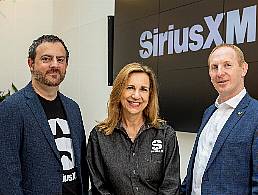When you’re looking for your dream job, or even just your next job, LinkedIn can be one of the best tools at your disposal – but only if you know how best to use it.
The job search can be gruelling, so you’ll want all the help you can get. LinkedIn has established itself as one of the best online resources for jobseekers.
With more than 470m users, LinkedIn is one of the most popular social media sites for professionals, making it a jobseeker’s dream.
While the site can definitely help you find what you’re looking for, it’s only as useful as the user makes it.
If you’re on the hunt for your dream job, applying these 10 tips to your LinkedIn profile can help your dream job find you.
Build your network
Your profile is only going to be helpful if people can see it, and that means you need to connect with the right people. Get introduced by people you already know, connect with people as soon as you can after meeting them at conferences etc.
Your network is essentially going to be where your potential dream job will come from. Not all jobs are advertised and LinkedIn is a great resource from which to be headhunted.
Make sure you’re findable
Speaking of being headhunted, you need to make sure you’re easy to find when people search for someone like you. The key to this is a customised URL and a strong, searchable headline.
While most candidates opt for their current job title, think of your headline as 120 characters to tell the world who you are and what you do.
Consider your headline your elevator pitch, with key words that will make you findable by the right people.
Customise your URL so that it’s easy to read and share, ie get rid of the randomly generated numbers.
Use your summary well
Your summary is similar to a cover letter you would write for a job application. But remember, it’s a social media profile, even if it is a professional one. Use slightly less formal language to tell a story about who you are and what skills you have.
You can add rich media to your summary too, so depending on the job you’re looking for, an infographic, a video or a presentation might be the best way to sell yourself. Don’t be afraid to get creative.
Make it your portfolio
While we’re on the topic of rich media, your LinkedIn profile has a much stronger scope than a standard CV to act as a portfolio.
You can add projects, links to previous work, documents and presentations that showcase your work better than simply talking about them.
Aside from adding individual pieces of work to each section of experience, you can also talk in-depth about bigger assignments in the projects section.
Millions of users will have their jobs and responsibilities listed, and there will probably be plenty of users with similar jobs and responsibilities to you, so it’s your individual work assignments and initiatives that will make you stand out.
Tell stories with your experience
When it comes to actually writing about your jobs in the experience section, try to avoid simply listing out those responsibilities, the way you might on your CV.
Use to your advantage the conversational tone of social media to tell stories about situations you have actually come across in previous experience, or results that needed to be obtained.
Watch out for sensitive information of course, but focus on what you would consider to be success stories in your career and write about them.
Avoid buzzwords
‘But how can I use key, searchable words without using buzzwords?’
It may sound tricky, but try to avoid buzzwords that aren’t really quantifiable or hold no real meaning.
LinkedIn previously released the top most overused words, which is a good place to start when it comes to cleaning up your language.
Words like: motivated, enthusiastic, passionate, driven and track record are just some of the buzzwords that will most likely cause recruiters to shudder. After all, it’s unlikely that anyone searching for a job isn’t motivated. Besides, even if they aren’t motivated, they will probably still use that word to describe themselves.
Pick the right skills
Once you’ve cleared your profile of buzzwords, it’s time to put in key words that will actually help you.
Scour job adverts in the industry you want to work in, find companies you want to work for or find specific jobs you want to apply for. Read their descriptions and requirements and pick out key skills that you are confident you have.
Make sure the words and skills recruiters are using are the same ones you’re using to describe your own abilities. It means that when they go looking, you’re more likely to appear on their radar.
Value recommendations
Endorsements are great on LinkedIn, but at the same time, everyone knows that they happen with a single mouse click. They’re not as valuable as recommendations.
It might be a good idea to ask previous employers or colleagues for a recommendation. Even a short one will act as a genuine and personal testimonial, and will look really good to perspective employers.
Always offer to write one in return as an incentive for them. To make it as easy as possible, you could even offer to write an outline or a template to help them. Just don’t give multiple employers the same template, to avoid identical recommendations.
Follow your dream companies
Once your profile is the best it can be for your job search and your network of connections is healthy, it’s time to follow some companies.
Following the companies that you might want to work for will keep you up to date for when they’re hiring.
You should also join industry-related groups to engage with the right professionals. Post content and comment on other people’s work to create relationships with the right people and organisations.
Update your status
Finally, use your status to your advantage. With Facebook, it’s easy to feel like writing a status is like shouting into mob, but LinkedIn is different.
For one thing, LinkedIn statuses aren’t really a place for people to share their day-to-day grievances with traffic or what they had for breakfast. This means there is less of a din to begin with. Use them for professional, quality content and thought-provoking pieces.
Secondly, LinkedIn gives generous space on the news feed to status updates, so the more frequently you use it, the more you’ll be seen.
Take the time to stay engaged on LinkedIn. You will gain a strong network of like-minded professionals, as opposed to Facebook friends who can’t help you professionally.
The more you post on LinkedIn, the more you will reach your unique audience, which will be ideal when you’re searching for that dream job.
Looking for jobs in tech or science? Check out our Employer Profiles for information on companies hiring right now and sign up for our Career Republic e-zine for a weekly digest of sci-tech careers news and advice.
Phone and notepad. Image: I AM NIKOM/Shutterstock




